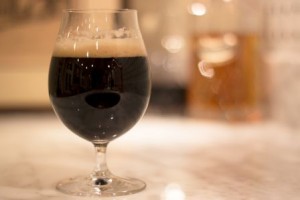 This week I provide a few tips for avoiding some of the most common off flavors in home brewed beer. Troubleshooting your beer can be a real challenge unless you are an experienced beer judge, but following these tips can help you avoid common pitfalls.
This week I provide a few tips for avoiding some of the most common off flavors in home brewed beer. Troubleshooting your beer can be a real challenge unless you are an experienced beer judge, but following these tips can help you avoid common pitfalls.
Always Clean and Sanitize
Unfortunately because beer has a relatively low alcohol content compared to other alcoholic beverages, it is more prone to infection. As I covered in a separate article on sour off-flavors in beer, poor sanitation usually results in a sour lactic acid. This is caused by bacterial infections and occasionally wild yeast.
The best way to prevent infection is to do a thorough cleaning and then separately sanitizing anything that comes in contact with your beer. They are two different steps – cleaning removes dirt, dust, grime, sediment and anything stuck to your equipment. Sanitizing actually kills off any remaining live organisms living on the surface of your equipment. For both steps I recommend using cleaners and sanitizers designed for beer brewing – as they will generally do a better job than many household cleaners and also they are free of oils and fats (lipids) which an actually hurt the head retention of your finished beer.
Ferment at the Right Temperature
I can’t tell you how many “bad” home brewed lagers I’ve had that were fermented too warm and contain excessive esters. Fermenting at the wrong temperature can also produce diacetyl, sulfur and rotton egg aromas/flavors and lead to yeast performance problems. Particularly during active fermentation, which is the first few days, it is very important you control and stabilize the fermentation temperature.
Each yeast manufacturer provides recommended ranges for their yeast – try as hard as possible to stay within that range even if you are brewing an ale. The best method is to have a controlled temperature fermentation vessel such as a fermentation refrigerator. However if you can’t afford a fridge you can use a variety of other methods including wet towels, ice and water baths, air chillers, and more to control your fermentation temperature. A slight rise in fermentation temperature near the end of fermentation (called a diacetyl rest) can also help reduce off flavors.
Have a Robust Boil Without a Cover
Boiling your wort is actually an important step in brewing that eliminates a number of volatile chemicals like DMS. Many of these are byproducts of the malting and mashing process. A rigorous boil for 60-90 minutes lets these volatile chemicals boil off. For this reason you certainly don’t want to cover your pot in the boil. A covered pot will trap and recirculate these chemicals back into the wort and leave off flavors in your beer – most commonly a “cooked corn” aroma and flavor.
Pitch Enough Yeast
While a yeast starter is not required for every batch, you do want to make sure you pitch enough yeast for a healthy fermentation. The exact amount to use is higher for lagers than ales and also higher for high gravity beers. See this article for a more detailed explanation. Low yeast pitch rates can result in incomplete fermentation as well as a variety of off flavors including esters and diacetyl (fruity and buttery off flavors). They can also result in incomplete or halted fermentations, which can be a real problem if you are bottling.
So there we have four tips you can use to reduce off flavors in your finished beer. If you want to learn more about any of the topics, click on any of the links above and you can read a detailed article on that particular off flavor.
Thanks for joining me on the BeerSmith Home Brewing Blog. You can grab a trial version of BeerSmith from BeerSmith.com. Be sure to sign up for my newsletter or my podcast for more great tips on homebrewing.
In the “Ferment at the Right Temperature” section, I believe the unwanted alcohol that may be produced is methyl alcohol (methanol), not ethyl alcohol (ethanol).
“… you certainly don’t want to cover your pot in the boil.”
Time to retire this old chestnut.
Nothing wrong with covering the pot during the boil provided the lid lifted and tipped periodically to drain the condensate.
Pingback: You Never Forget Your First | The Wicked Pint
Another reason I leave the lid off the boil is to achieve the proper boil off rate; if the lid is left on then the steam has nowhere to go and the SG doesn’t rise as much as it would uncovered. As such you end up with too much wort at a lower SG than it should be. Besides, who can be bothered to stand around the boil constantly lifting the lid to drain the condensation… it builds up bloody fast in a covered boil and constantly drips back into the boiling liquid, “periodically” draining it ain’t gonna be enough unless you do it every minute or two, in which case you may as well just leave the lid off anyway.
I used to be recommended this website by way of my cousin. I’m now not certain whether this put up is written through him as no
one else realize such detailed about my difficulty.
You’re incredible! Thank you!